Scame Cables and wires
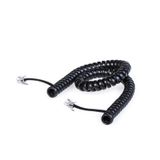

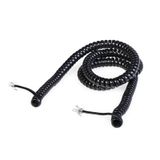
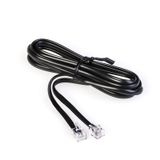
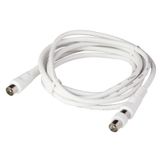

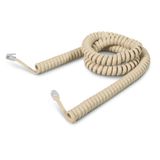

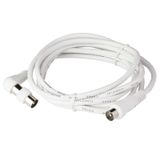
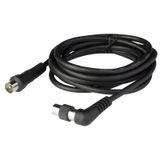

scame cables and wires project context
Site crews pick Scame for hardware that survives real loads and routing. The cable portfolio covers 300/500 V, 450/750 V, and 0.6/1 kV classes with copper conductors to IEC 60228, single cores for boards and risers, and multi-core sheathed types for machines, trays, and temporary power. CPR classes from Eca up to Dca s2 d2 a1 are available for public interiors; oil- and UV-resistant rubbers support outdoor and plant areas. Bending radii land where installers expect them: typically ≥4×D for flexible cords and ≥6–8×D for fixed runs, with printed meter marks to speed pulling and cutting.
scame power cables options and ratings
Range logic is straightforward for planning.
H07RN-F rubber cords in 1.5–35 mm² handle tools, stage power, and mobile feeders; the elastomer sheath rides out abrasion and low temperatures down to −25 °C. NYY-J/PVC-sheathed 0.6/1 kV types in 3×4 to 5×70 mm² take buried or outdoor fixed routes where mechanical protection is in place. NYM-J 300/500 V suits indoor fixed wiring in dry or damp rooms. For risers and boards, LSZH single cores (e.g., H07Z1-K) in 1.5–16 mm² keep smoke and acidity low in evacuation paths. Where electromagnetic noise is a risk, screened YY/CY/SY families add alu-foil or tinned-copper braid (≥80% coverage) to keep drives and PLC I/O stable.
Scame technical specifications and standards
Conductors Class 1/2 for fixed, Class 5 for flexible; tin-plating on request for moisture or maritime zones.
Insulation PVC TI2 or cross-linked LSZH; sheaths in PVC, LSZH, or chloroprene rubber for H07RN-F.
Thermal envelope −25…+60 °C under load for rubber cords, −5…+70 °C for PVC fixed cables; short-circuit conductor temps to 160–200 °C depending on family.
Current-carrying capacity aligned to EN 50565 tables; derate for grouping and ambient above 30–35 °C.
Fire behaviour IEC/EN 60332-1 flame-retardant as baseline; LSZH variants meet low smoke/halogen targets per EN 50525 and CPR declarations.
Routing and terminations compatible with spring or screw terminals sized to 1.5–95 mm²; glands M16–M50 match typical OD ranges and ingress plans to IP54–IP66 at the enclosure.
For fixed building runs, planners typically call up scame installation cables when standardising risers and floor loops under one material code across sites.
scame flexible wiring handling and routing
Temporary power, stages, pop-ups, and maintenance shifts depend on cords that coil cleanly, lie flat, and stay supple after rain or a cold load-in. H07RN-F remains the workhorse: abrasion-resistant sheath, good grip in gloved hands, and stable contact resistance after thousands of plug cycles. For cable guards and tray edges, specify anti-kink sleeves at terminations; on long tool circuits, distribute loads with 32 A tap-offs to keep voltage drop inside 3–5% on 230 V feeders. Where VFDs share the corridor, step up to braided screens on pendant cords to limit radiated noise into sensors and audio lines.
Scame applications and compatibility
Commercial buildings use single-core LSZH in boards, NYM-J in walls and ceilings, and PVC-sheathed multi-cores in plant rooms. Food and sports venues lean toward rubber-jacketed cords for wash-down areas. Manufacturing adds screened control pairs for encoder lines and safe-torque-off loops. The same OD ranges and gland threads align with Scame industrial sockets, interlocked outlets, and compact distribution boards, so tool tails and feeder whips terminate without oddball fittings. In machine panels, planners specify scame control wiring to keep PLC cabinets tidy with numbered cores, compact bend radii, and reliable ferrule seating.
Scame integration with other brand products
Cable ODs fit standard Scame cable glands on enclosures and interlocked sockets; seal kits retain IP66/IP67 where the environment demands it. Colour coding and core numbering match the labeling sets used on Scame plugs and distributors, which keeps fault-finding fast. For EV service bays and loading docks, combine rubber cords with Scame isolators and wall boxes so lock-off, strain relief, and sequencing follow the same mechanical logic.
Scame selection criteria for B2B clients
Environment Decide PVC or LSZH indoors, rubber outdoors or where flexing and low temperature are routine; set CPR class by building zone.
Electrical Envelope Choose 300/500 V, 450/750 V, or 0.6/1 kV by application; size cross-sections from voltage-drop and protection curves, not nameplate alone.
Mechanics and Routing Check minimum bend radius, tray fill, and pulling tension; specify screened variants near drives or radio systems.
Terminations Confirm gland thread and clamping range with the enclosure; pick ferrule sizes and lug barrels that match conductor class.
Logistics Consolidate colours and cross-sections per floor or line; order cut-to-length drums for risers, and pre-terminated whips for repetitive bays to reduce install time.
Advantages of working with Bankoflamps
Expect project-specific B2B pricing tied to your cable schedule, a named account manager, and live EU stock before commitment. Quotes return quickly so tender and weekend shutdowns stay on track. Orders by EAN/MPN land cleanly in your ERP; downloadable price lists remain current through revisions. Your portal shows lead times and order status, with purchase-history analytics to standardise cross-sections and sheath types across sites. Trusted clients can use post-payment terms up to 30 days. We plan consolidated shipments to cut freight on multi-location drops and set price-validity windows so phased pulls remain predictable.